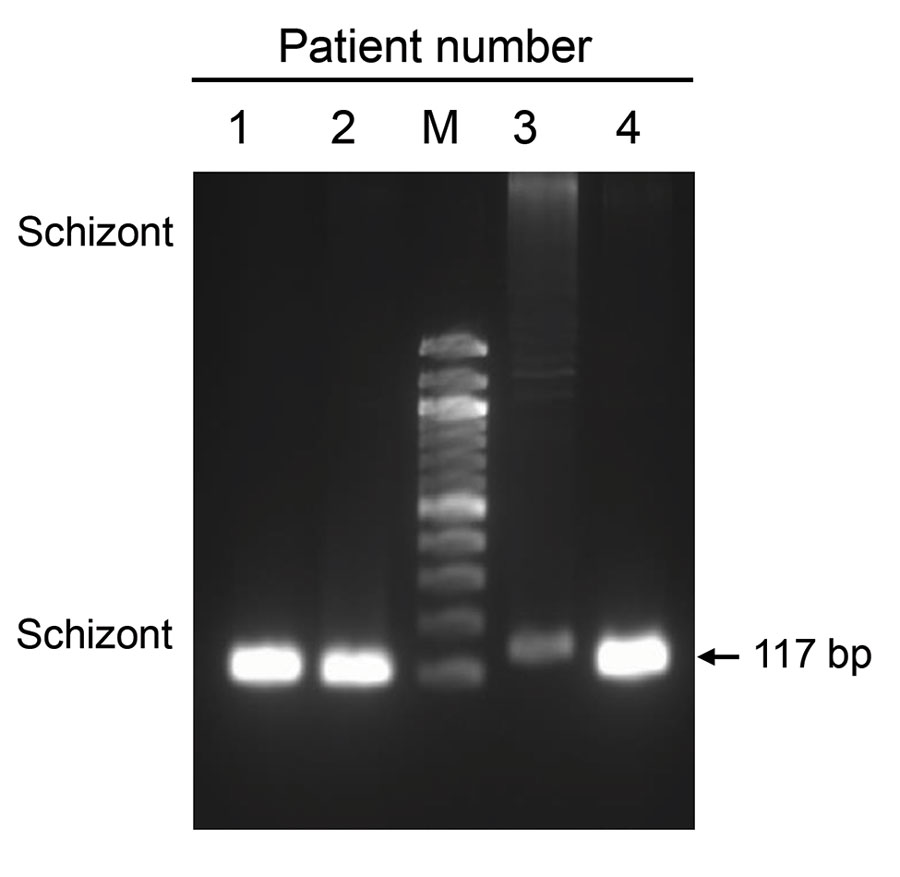Volume 30, Number 6—June 2024
Dispatch
Autochthonous Plasmodium vivax Infections, Florida, USA, 2023
Figure 1

Figure 1. Identification of Plasmodium vivax infections in blood samples from malaria patients, Florida, USA, May–July 2023. Image shows 117-bp PCR products amplified from blood samples from 4 patients by using P. vivax–specific primers targeting the 18S rRNA gene. M, DNA ladder.
1These authors contributed equally to this article.
2These authors were co-principal investigators.
Page created: April 25, 2024
Page updated: May 22, 2024
Page reviewed: May 22, 2024
The conclusions, findings, and opinions expressed by authors contributing to this journal do not necessarily reflect the official position of the U.S. Department of Health and Human Services, the Public Health Service, the Centers for Disease Control and Prevention, or the authors' affiliated institutions. Use of trade names is for identification only and does not imply endorsement by any of the groups named above.